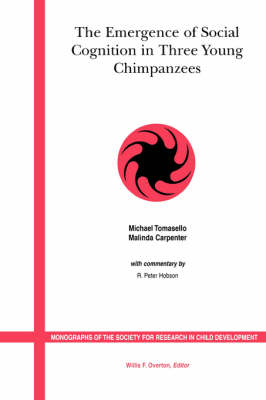Monographs of the Society for Research in Child Development
4 total works
Flexibility in Early Verb Use
by Letitia R. Naigles, Erika Hoff, Donna Vea, Michael Tomasello, Silke Brandt, Sandra R. Waxman, and Jane B. Childers
Flexibility and productivity are hallmarks of human language use. Competent speakers have the capacity to use the words they know to serve a variety of communicative functions, to refer to new and varied exemplars of the categories to which words refer, and in new and varied combinations with other words. When and how children achieve this flexibility—and when they are truly productive language users—are central issues among accounts of language acquisition. The current study tests competing hypotheses of the achievement of flexibility and some kinds of productivity against data on children’s first uses of their first-acquired verbs.
Eight mothers recorded their children's first 10 uses of 34 early-acquired verbs, if those verbs were produced within the window of the study. The children were between 16 and 20 months when the study began (depending on when the children started to produce verbs), were followed for between 3 and 12 months, and produced between 13 and 31 of the target verbs. These diary records provided the basis for a description of the pragmatic, semantic, and syntactic properties of early verb use. The data revealed that within this early, initial period of verb use, children use their verbs both to command and describe, they use their verbs in reference to a variety of appropriate actions enacted by a variety of actors and with a variety of affected objects, and they use their verbs in a variety of syntactic structures. All 8 children displayed semantic and grammatical flexibility before 24 months of age. These findings are more consistent with a model of the language learning child as an avid generalizer than as a conservative language user. Children’s early verb use suggests abilities and inclinations to abstract from experience that may indeed begin in infancy.
The Emergence of Social Cognition in Three Young Chimpanzees
by Michael Tomasello, Malinda Carpenter, and R. Peter Hobson
This Monograph reports a series of ten studies on the social-cognitive abilities of three young chimpanzees, ages to four years.
- Compares outcomes to similar studies conducted on human infacts for a comparative understanding.
- Looks at chimpanzees' abilities to understand and imitate goal-directed actions.
- Results suggest that the ontogeny of human social cognition comprises two relatively distinct trajectories: one for understanding intentional action and perception, common to all apes, and another for sharing psychological states with others in collaborative acts involving joint intentions and attentions, unique to the human species.
Early Social Cognition in Three Cultural Contexts
by Tara Callaghan, Henrike Moll, Hannes Rakoczy, Felix Warneken, Ulf Liszkowski, Tanya Behne, and Michael Tomasello



